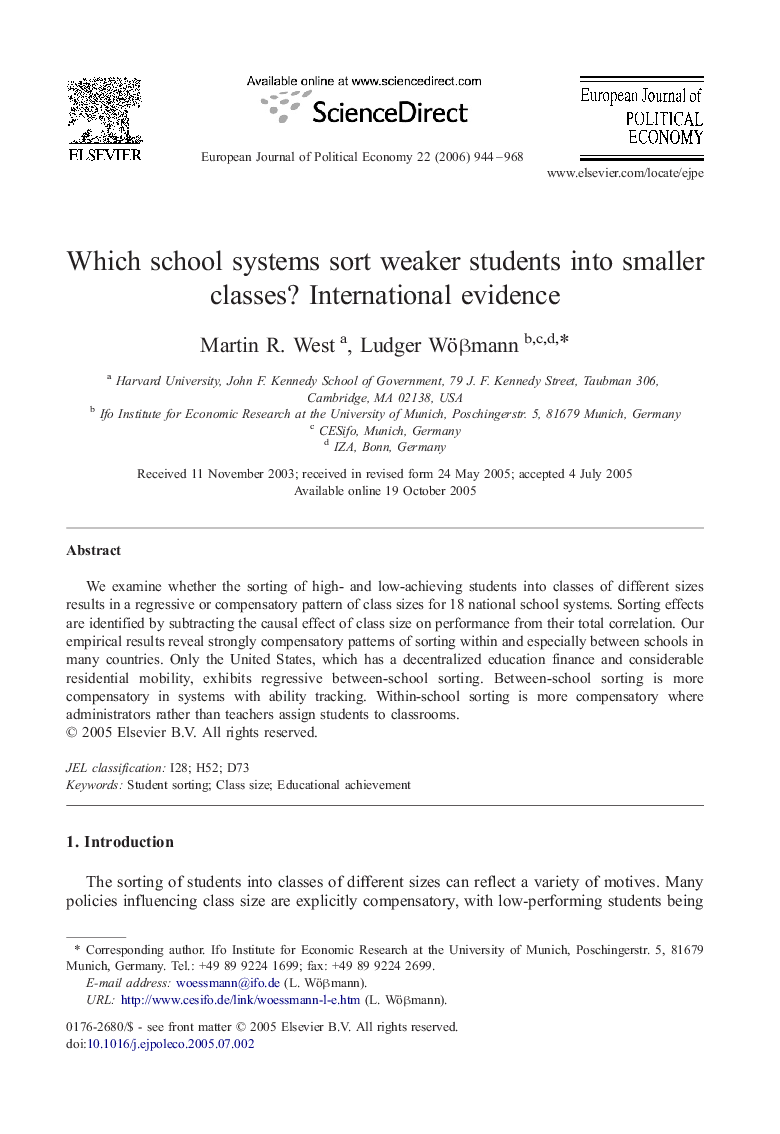| Article ID | Journal | Published Year | Pages | File Type |
|---|---|---|---|---|
| 5068613 | European Journal of Political Economy | 2006 | 25 Pages |
We examine whether the sorting of high- and low-achieving students into classes of different sizes results in a regressive or compensatory pattern of class sizes for 18 national school systems. Sorting effects are identified by subtracting the causal effect of class size on performance from their total correlation. Our empirical results reveal strongly compensatory patterns of sorting within and especially between schools in many countries. Only the United States, which has a decentralized education finance and considerable residential mobility, exhibits regressive between-school sorting. Between-school sorting is more compensatory in systems with ability tracking. Within-school sorting is more compensatory where administrators rather than teachers assign students to classrooms.
